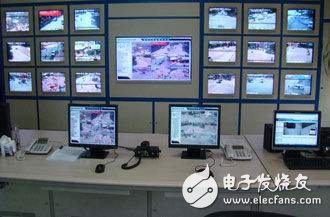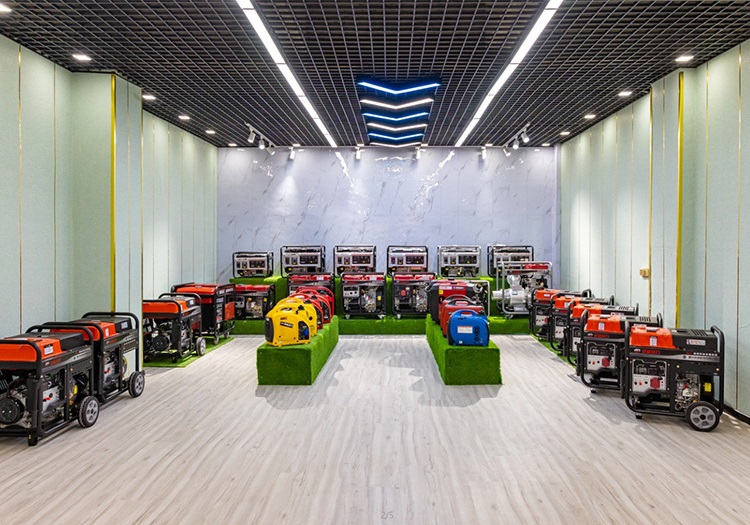The early stadium security system was relatively closed and flat, basically including security equipment, access control and video surveillance. The application of security products in a series of Olympics and World Cups as a “touchstone†has accelerated the standardization and high-end process of the security industry. The huge market and influence of large-scale sports events have determined that the products they use must require high quality and new technologies. Early global security providers focused on products from established security companies such as Siemens, Honeywell, and GE. After 2008, with the development of high-definition, intelligent, and AI, and the ability of the system to access the back-end platform and respond quickly. Service requirements, domestic and international large venues, China's security products have gradually become mainstream. The construction of the stadium security system should be based on verification identity, access control, physical isolation, prevention and disposal of emergencies, realizing emergency linkage and auxiliary analysis and decision-making of security systems, timely warning and control of various suspicious phenomena and bursts in the stadium. The occurrence of the event. The security of the sports event needs to jump out of the stadium, covering the urban areas, streets, airports, subways, etc., to achieve unified control and rapid response to the city, region, street and venue. Video needs to be cascaded and controlled to require stereo. Rio Replay: It is reported that during the Olympic Games, Brazil had 88,000 people from 21 agencies including the military and firefighters to cooperate and participate in the security of the event. At the same time, Brazil also maintains close communication with about 100 countries and regions to cooperate in counter-terrorism. Moreover, the Olympic Security Intelligence Center was established in Brasilia to process all information. In addition to Rio, other cities with Olympic football programs also have safety information sub-centers. In addition to the strengthening of civil air defense, Rio also increased the layout of monitoring equipment. Rio's surveillance cameras increased from 3,500 at the beginning of the year to 6,200, and the number has almost doubled. In addition to the new use of drone monitoring, baggage cargo scanners, wireless intercom and other security equipment. The smart cameras arranged in every corner of the stadium provide a richer operating option for the live camera directly, and can operate the remote control camera for 360° omnidirectional shooting. The front-end monitoring points of the stadium include a wide range of stadium entrances and exits, squares, outdoor parking lots, auditorium areas, and panoramic views of the stadium. The high-definition fast-track cameras can be deployed; the entrances and exits of the stadium, the rostrum (area), and the VIP room ( Flexible network cameras can be deployed in key areas such as regional), VIP channel, referee area, athlete area, competition management area, and news media area. Flexible for other general halls or channels with small target range and low security requirements. Deploy SD or HD cameras. The IP video image is connected to the core switch of the monitoring center through the stadium video transmission network. The security main control center realizes centralized management and control of video images, and is composed of various application support servers and storage device control devices. Highlights: Super Starlight Camera, PTZ Lookout Camera, Panoramic Linkage Camera, Face Recognition Control, Face Recognition Verification, Vehicle Identification Control, GoalControl Doorline Technology, Integrated Platform, etc. The monitoring system of the surrounding neighborhoods and sports venues of the host city of the event should be based on the discovery of unsafe factors and the handling of emergencies. Through the video analysis technology, the user can preset different alarm rules according to the video content analysis function. When the target violates the predefined rules in the scene, the system will automatically issue an alarm; the monitoring workstation will The alarm message is automatically popped up and a warning tone is sounded. The user can click on the alarm information to reorganize the alarm scene and take relevant measures. The intelligent analysis system includes various scenes such as people, vehicles, and bayonet. The three-dimensional anti-control cloud defense system platform integrated machine not only has basic video management, equipment management, IPSAN storage, streaming media forwarding, face recognition, vehicle intelligent analysis, but also innovative augmented reality technology, video real map, high and low Three-dimensional prevention and control means such as video linkage, social information collection, and dynamic display of police information. The system is mainly used to solve the problem of the current safe city project, the single-point monitoring scope is small, the monitoring picture can not take into account the whole and the part, and the overall security situation of the city cannot be understood. The system adopts augmented reality technology to structure the background information in the video, make the background information searchable and positionable, and realize the functions of GPS coordinate mapping, orientation sensing, video linkage, etc., and enhance the combination of real-time image and information. The system grasps the overall situation of the monitoring area through the bird's-eye view of the high-point camera. By calling the low-point camera to view the details of the monitoring area from different angles, the monitoring experience and command efficiency can be greatly improved. The face recognition system has become an important measure for Olympic security. The core is an emergency photo database management system. Many people have been found in the Athens Olympic Games, but there was no face recognition system. In 2008, China has a self-developed “face recognition systemâ€. This system is not only used in command centers and Olympic venues, but also useful for many Olympic facilities, including transportation facilities, entrance and exit management. Due to the high concentration and concentration of stadium personnel, the number of political figures, athletes, spectators, and related service personnel has reached more than 100,000. In such an important place where personnel are highly concentrated, it is particularly important to identify the identity of the personnel entering the venue. The face recognition technology realizes the intelligentization of the stadium security monitoring system, which also eliminates potential security loopholes and improves the security of the stadium and the level of anti-terrorism. 2018, with AI cameras, cloud computing and big data applications, static and dynamic face recognition are widely used. In the match between England and the German team in the World Cup in South Africa, Lampard's goal across the line was ruthlessly blown away by the incumbent chieftain Larry Onda. This case led to heated discussions and eventually pushed FIFA to decide to use GoalControl in the World Cup in Brazil. GoalControl provides a 4D technology, the principle is to install 14 high-speed cameras over each stadium, each goal is monitored by 7 cameras, the ball passes the door line less than one second, the system will cross the line The conclusion of the (goal) is sent to the referee's watch via a wireless signal and is only sent to the referee's watch. In addition, the technology can provide multi-angle 3D images to meet the needs of live and recorded broadcasts during and after the game. The high-speed camera shoots 500 frames per second (the normal security monitoring frame rate is 25 frames per second), that is, every 2 mm and one frame, according to the current maximum speed of football (in the current statistics, in the 1990 World Cup in Italy, Matt Uz's free-kick ball hangs directly on the net, reaching a speed of 210 kilometers per hour. Another time, the German team's Muller has played a ball with a speed of 180 kilometers per hour.) The system can record about 5mm (FIFA requires 3cm) The situation in the goal area. The matching image processing software will filter the players and referees in the picture to locate the position of the ball in the 3D space. All objects in the camera's field of view will be tracked, but the player and referee will be subtly filtered out; in order to accurately determine the position of the ball (X, Y, Z three axes), the camera will automatically and continuously capture it; The ball crosses the door line and the signal is sent to the referee's watch in less than a second; the system also displays a virtual 3D view of the stadium that displays the various angles on the large screen. In the game, once the ball crosses the goal line, the GoalControl system immediately makes a judgment and sends an order. The dedicated electronic watch on the referee's wrist will vibrate and flash, reminding the goal to be effective and minimizing false positives. In addition, the camera also stores all the pictures and related events at the time of the goal for post-playback playback. Despising large-scale urban-level 3D reconstruction technology, with tera-scale image pixel processing capability, it can analyze high-altitude and multi-angle 10,000 aerial photos, and perform 3D data processing and 3D model editing to reproduce the city panorama. Russian security market situation: It is reported that the total output value of Russian security companies in 2017 is about 5 billion US dollars, and the annual growth rate of security market is 20-25%, among which CCTV products have the highest growth rate. The general characteristics of the security market are: several major distributors monopolize the sales market of Russian products. The local enterprises have limited production capacity in the CCTV field, mainly OEM products from European and American companies. The earliest countries in the field of video surveillance are Taiwanese companies and Japanese companies (Panasonic, JVC, Sanyo), but in recent years other countries have also entered, such as Burle, Pelco, Robot in the United States, Siemens in Germany, Haikang in China, Huawei and so on. The well-known access control is Honeywell, Siemens, Northen Computers, Apollo Kaba, Dorma, etc. Generators refer to mechanical equipment that converts mechanical energy into electrical energy, which is driven by hydraulic turbines, steam turbines, diesel engines or other power machinery, and converts the energy generated by water flow, air flow, fuel combustion or nuclear fission into mechanical energy, which is then transferred to the generator, and then converted to electrical energy by the generator.
Generators are widely used in industrial and agricultural production, national defense, science and technology and daily life. Generators have many forms, but their working principles are based on the law of electromagnetic induction and the law of electromagnetic force. Therefore, the general principle of its construction is to use appropriate magnetic and conductive materials to form the magnetic circuit and circuit for mutual electromagnetic induction, so as to generate electromagnetic power and achieve the purpose of energy conversion.
Diesel generator is a small power generation equipment, which refers to the power machinery that uses diesel as fuel and diesel engine as prime mover to drive the generator to generate electricity. The whole unit is generally composed of diesel engine, generator, control box, fuel tank, storage battery for starting and control, protection device, emergency cabinet and other components.It can be used for daily power generation and emergency power generation of various families, offices, large, medium and small enterprises.
Open frame generator,generator set,AC diesel generator set,Single phase generator,3 phase diesel generator Henan New Electric Power Co.,Ltd. , https://www.newelectricpower.com
City-level 3D reconstruction technology: relying on powerful tera-pixel image computing capabilities and top-level deep learning computer vision algorithms, real-world 3D reconstruction technology can realize massive 2D image and video data based on aerial photography, and restore rich details in the virtual world. The city-level 3D panoramic model allows users to interactively view the faces and changes of small to green vegetation and architectural terrain in the city, and fundamentally solves the problem that traditional two-dimensional planar images cannot restore real-world three-dimensional information.
